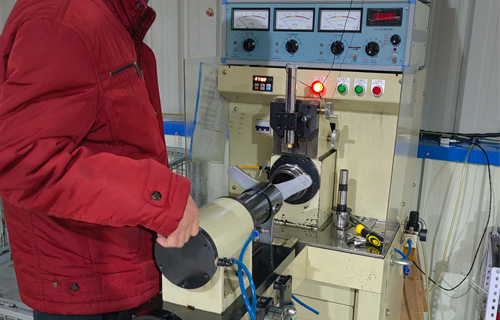
Aug . 13, 2024 00:02 Back to list
Exploring the Benefits and Applications of Sealed Angular Contact Bearings in Precision Machinery
Sealed Angular Contact Bearings An Overview
Angular contact bearings are specialized types of rolling element bearings designed to accommodate both radial and axial loads, making them essential components in various mechanical systems. Among these, sealed angular contact bearings are particularly noteworthy due to their ability to maintain lubrication and exclude contaminants from the internal components. This article provides an overview of sealed angular contact bearings, their construction, advantages, applications, and maintenance considerations.
Construction and Design
Sealed angular contact bearings consist of an inner ring, an outer ring, rolling elements (usually balls or rollers), and a cage that separates the rolling elements. The unique feature of these bearings is the angled contact between the rolling elements and the rings, which allows them to handle higher axial loads compared to standard radial bearings. The sealed aspect refers to the presence of seals (or shields) on one or both sides of the bearing. These seals prevent the ingress of dust, dirt, and other contaminants, as well as retain the lubricating grease, thereby enhancing the lifespan and performance of the bearing.
The angle of contact in these bearings can be varied to suit specific load requirements. Common angles include 15°, 30°, and 40°. This angular design allows them to efficiently transmit loads, making them suitable for applications that require precision and high-speed operation.
Advantages of Sealed Angular Contact Bearings
1. Contamination Resistance The sealing mechanism keeps out external pollutants such as dirt, dust, and moisture, which can lead to premature wear and failure.
2. Lubrication Retention The seals help retain the lubricating grease within the bearing, resulting in lower friction and heat generation. This is crucial for maintaining optimal performance in high-speed applications.
sealed angular contact bearings

4. Reduced Maintenance The sealed design often means that these bearings require less frequent maintenance and lubrication, making them more attractive for operations where minimizing downtime is critical.
Applications
Sealed angular contact bearings find extensive applications across various industries due to their versatility and reliability. Some common applications include
- Aerospace Used in aircraft engines and landing gears, where precision and reliability are paramount. - Automotive Found in wheel hubs, transmissions, and electric motors, these bearings support axial and radial loads efficiently. - Machine Tools Utilized in high-speed spindles where precise positioning and reduced vibration are necessary. - Robotics and Automation In robotic arms and conveyor systems, sealed angular contact bearings aid in smooth operation and accuracy. - Manufacturing Equipment Employed in conveyor systems, packaging machines, and textile machinery, where durability and less maintenance are vital.
Maintenance Considerations
While sealed angular contact bearings are designed to lower maintenance needs, they still require regular inspection to ensure optimal performance. Operators should monitor for signs of overheating, unusual noise, or vibration, which could indicate issues such as misalignment or lubrication failure. When replacing these bearings, it's essential to choose high-quality components that meet the required specifications to maintain performance and reliability.
In conclusion, sealed angular contact bearings are innovative solutions for applications requiring precision, efficiency, and durability in handling both radial and axial loads. Their design not only prolongs service life by protecting against contamination but also reduces the frequency and complexity of maintenance tasks. As industries continue to advance, the demand for reliable bearing solutions like sealed angular contact bearings will undoubtedly grow, supporting the continuous evolution of technology and machinery.
Latest news
-
Ball Bearing 6001 – Reliable Deep Groove Bearings for Machinery & Industry
NewsNov.24,2025
-
Comprehensive Guide to 6305 2rsr Bearings – Specs, Uses & Vendors
NewsNov.24,2025
-
In-Depth Guide to 6003z Bearing Dimensions: Specs, Applications & Vendors
NewsNov.23,2025
-
Understanding the 6201 Z Bearing - Specifications, Applications, & Future Trends
NewsNov.23,2025
-
Everything You Need to Know About 6001 C3 Bearing – Specs, Uses, and Advantages
NewsNov.22,2025
-
6208 zz Bearing – Key Technical Insights, Applications & Vendor Comparison
NewsNov.22,2025
